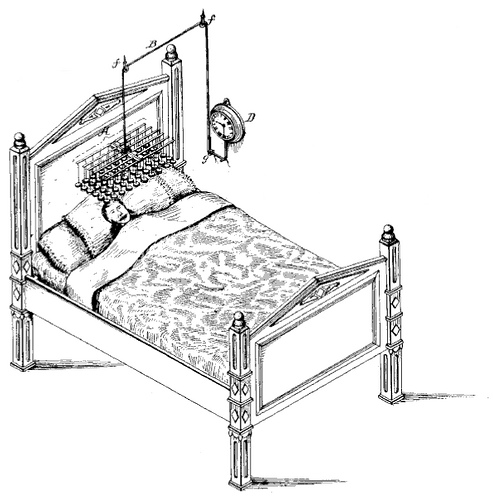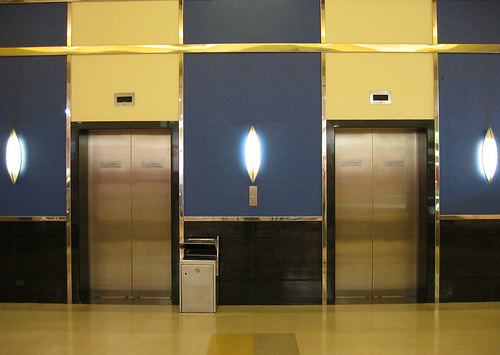mageira
n. a woman’s sublimation of sexual desire through cooking
Author: Greg Ross
Strange Meeting
During World War I, Wilfred Owen’s younger brother Harold was an officer on the British cruiser HMS Astraea. While anchored off West Africa shortly after the armistice, he claims he had “an extraordinary and inexplicable experience”:
I had gone down to my cabin thinking to write some letters. I drew aside the door curtain and stepped inside and to my amazement I saw Wilfred sitting in my chair. I felt shock run through me with appalling force and with it I could feel the blood draining away from my face. I did not rush towards him but walked jerkily into the cabin–all my limbs stiff and slow to respond. I did not sit down but looking at him I spoke quietly: ‘Wilfred, how did you get here?’ He did not rise and I saw that he was involuntarily immobile, but his eyes which had never left mine were alive with the familiar look of trying to make me understand; when I spoke his whole face broke into his sweetest and most endearing dark smile. I felt not fear–I had none when I first drew my door curtain and saw him there–only exquisite mental pleasure at thus beholding him. He was in uniform and I remember thinking how out of place the khaki looked amongst the cabin furnishings. With this thought I must have turned my eyes away from him; when I looked back my cabin chair was empty … I wondered if I had been dreaming but looking down I saw that I was still standing. Suddenly I felt terribly tired and moving to my bunk I lay down; instantly I went into a deep oblivious sleep. When I woke up I knew with absolute certainty that Wilfred was dead.
He later learned that his brother had been killed the preceding week.
See also A Sign and “That Apparition, Sole of Men”.
The Fear Liath

In 1891, mountaineer John Norman Collie was descending from the peak of Scotland’s Ben MacDhui when “I began to think I heard something else than merely the noise of my own footsteps.”
“For every few steps I took I heard a crunch,” he told the Cairngorm Club in 1925, “and then another crunch as if someone was walking after me but taking steps three or four times the length of my own.”
Collie could see nothing in the heavy mist, but “[as] the eerie crunch, crunch sounded behind me, I was seized with terror and took to my heels, staggering blindly among the boulders for four or five miles.”
Reports of a “big gray man” on the mountain have never been substantiated, though other climbers have reported uncontrollable feelings of panic. Collie concluded only that there is “something very queer about the top of Ben MacDhui.”
Sweet Dreams

If a conventional alarm clock doesn’t wake you, consider this Improved Device for Waking Persons from Sleep, patented in 1882 by Samuel Applegate.
It suspends a frame “directly over the head of the sleeper” from each of whose cords hangs “a small block of light wood, preferably cork.”
“When it falls it will strike a light blow, sufficient to awaken the sleeper, but not heavy enough to cause pain.”
If that’s not dangerous enough, “By a simple connection between the cord B and the key of a self-lighting gas-burner, provision may be made for turning on and lighting the gas in the room at the same time that the sleeper is awakened.”
Noisy Neighbors

Jimi Hendrix and George Frideric Handel lived in adjoining houses.
Handel lived at 25 Brook Street in London from 1723 until his death in 1759.
210 years later, Hendrix moved in at number 23.
Ninth Life
Agonizing over how to put down his ailing cat, Alexander Woollcott consulted Dorothy Parker.
She said, “Try curiosity.”
A Locked-Room Murder
On June 11, 1920, bridge expert Joseph Elwell was found dead in his Manhattan home, a bullet between his eyes. All the windows and doors were fastened except for Elwell’s bedroom window on the third floor. There was no evidence of a break-in, nothing of value was missing, and ballistics evidence ruled out suicide. The case has never been solved.
The Elevator Paradox

In the 1950s, physicists George Gamow and Moritz Stern worked in the same seven-story building. Gamow, on the second floor, noticed that the first elevator to arrive at his office was most often going down. For Stern, on the sixth floor, the first elevator was most often going up. It was as if elves were manufacturing elevator cars in the middle of the building.
You can observe the same phenomenon in most tall buildings, and there are no elves involved. Do you see why it occurs?
Unquote
“It is not because things are difficult that we do not dare. It is because we do not dare that they are difficult.” — Seneca
Human Anagrams
In Literary Frivolities, Fancies, Follies and Frolics (1880), William Dobson tells of a curious spectacle presented to Stanislaus, the future king of Poland, on his return to Lissa:
There appeared on the stage thirteen dancers, dressed as youthful warriors; each held in his hand a shield, on which was engraved in characters of gold one of the thirteen letters which compose the two words DOMUS LESCINIA. They then commenced their dance, and so arranged it that at each turn their row of bucklers formed different anagrams. At the first pause they presented them in the natural order:
DOMUS LESCINIA [O (heir to the) House of Lescinius,]
At the second: ADES INCOLUMIS [Thou art present with us still unimpaired–]
At the third: OMNIS ES LUCIDA [Thou art all that is wonderful.]
At the fourth: MANE SIDUS LOCI [Stay with us, O sun of our land!]
At the fifth: SIS COLUMNA DEI [Thou art one of God’s supporters—]
At the last: I, SCANDE SOLIUM. [Come, ascend thy regal throne.]
“This last was the more beautiful,” writes Robert Moritz, “since it proved a true prophecy.”
